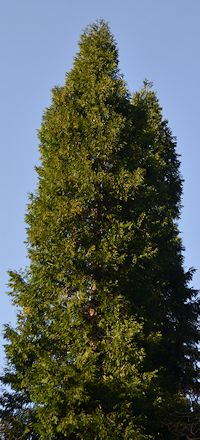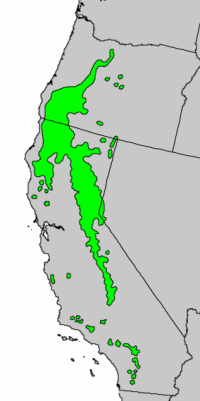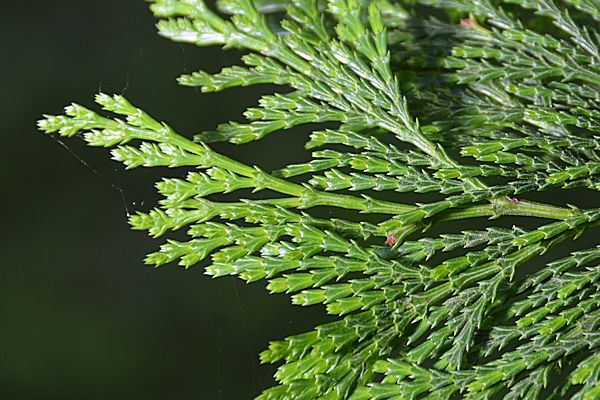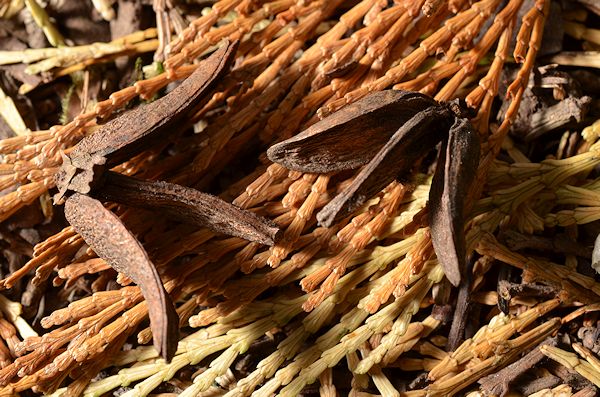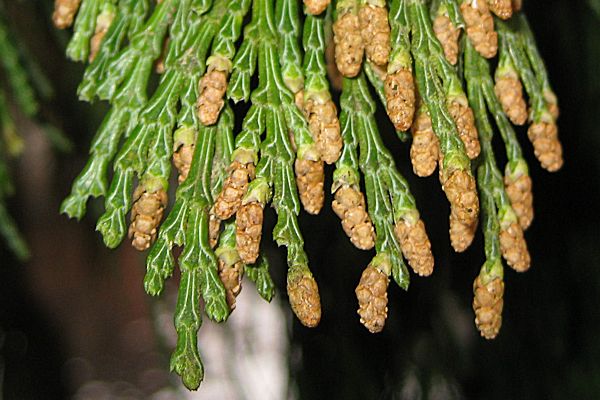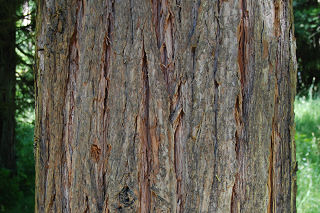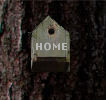 |
Northwest Conifers |
AboutAll ConifersConifersLow-elevationHigh-elevationOthersEast SideSouthwestNon-natives——————Conifer ConesIndexMore Info |
Incense Cedar
– Calocedrus
decurrens
|
|
|
This aromatic member of the cypress family grows to 150 feet (46 meters). The foliage forms flat sprays that often have a vertical orientation, unlike western red cedar, which has drooping sprays with a horizontal orientation. Leaves: Incense cedar has small, flat scale-like leaves forming overlapping, long, wedge-shaped joints. The leaves are often described as forming the shape of a wine glass, but beer drinkers would swear that they are shaped like a beer glass. This pattern, often outlined in white, is distinct to incense cedar. The leaves release a distinctive aroma when crushed. Cones: The differences that distinguish incense cedar leaves and bark from other cedars may be subtle, but incense cedar cones are unmistakably unique. They are shaped like a duck's bill, and when they mature, they open, showing the open bill with its tongue sticking out. Bark: The reddish-brown bark looks similar to the bark of the other native cedars, but it is deeply furrowed on large trees. Where it grows: Incense cedar grows in the Cascades at elevations up to 6000 feet (1800 meters). A few grow nearly as far north as Mount Hood but it grows more extensively as you travel south through the Cascades to the Siskiyous and coastal mountains of southwest Oregon. It also grows in many mountainous areas of California. Incense cedar at Hoyt Arboretum Uses: Most pencils were once made from incense cedar. It was also used to make aromatic cedar chests. It is often grown as an ornamental, and is used in Christmas wreaths. Its bright yellow pollen cones ripen in late fall, just in time to give Christmas wreaths tiny bursts of bright color. Names: Calocedrus means "beautiful cedar." Decurrens describes how the leaves extend down the stem. The English form of the word is "decurrent." Other common names: White cedar and California post cedar. Note that incense cedar is not a true cedar. That is, its genus is not Cedrus, the genus of the true cedars from the Middle East and Himalayas. Some writers indicate this by writing the name as "incense-cedar."
|
Cones Pollen cones
|
© 2011 Ken Denniston

